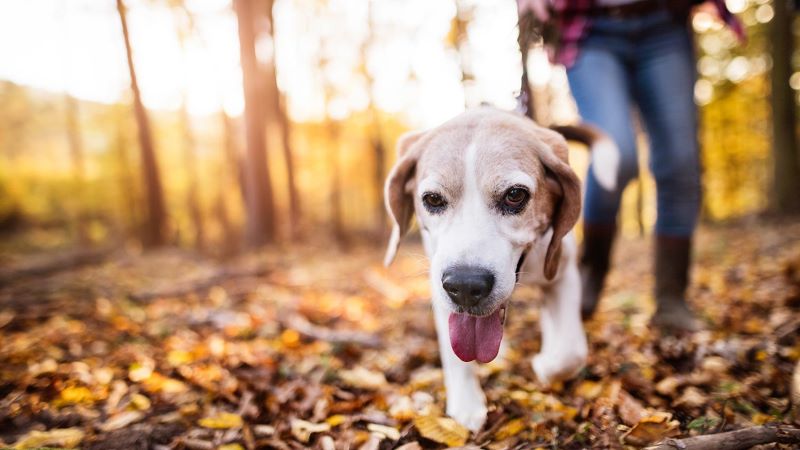One of the fastest ways to make an enemy out of a neighbor is by not controlling your dog. Sometimes this is easier said than done, especially if said dog is a puppy. But there are a few dog walking tips and tricks that if you are careful to observe, will have your neighbors saying you have the best behaved dog on the street!
- Do not trespass. This applies to your neighbors’ driveway, the narrow strip of grass between the sidewalk and the street, and especially their flower bed. Not only might your dog’s paws trample their flowers, your dog’s urine can kill some types of grasses, leaving an unsightly brown spot in their yard.
- Pick up after your dog. It's unsanitary to leave behind your dog’s pile of poop when you are out for a walk. Plus, it is just the neighborly thing to do to remove anything your dog leaves behind before someone else has a chance to step in it. It is important to pick up your dog’s poop not just from a neighbor’s yard, but also from common areas and/or the streets and sidewalks. Leaving poop behind can spread disease and encourage flies.
- Keep your dog under control. Even though I am clearly a dog lover, I still get wary when I see a neighbor walking her dog and it doesn’t look like she has good control over him. It is important to train your dog to walk nicely on a leash. We use a very short leash, that keeps our dog close by our side. She responds quickly to any correction. According to Sarah Fraser, a certified professional dog trainer and co-founder of Instinct Behavior & Training in New York City, “From a relationship perspective, if your dog is walking nicely on a leash, it likely means that your dog is paying more attention to you, making it easier for you to provide direction and guidance as needed along your walk.” This, of course, makes for a more enjoyable walk for you and for your dog -- with the added bonus of reassuring your neighbors that your dog is under control. Fraser recommends a no pull harness or working with a certified positive reinforcement-based trainer if your dog is still pulling during walks.
- Be cautious of other dogs. Yesterday, on our walk, a neighbor’s dog was out wandering around his front yard. Knowing one of the neighbor’s kids had probably left the front door open and the dog escaped, I wanted to help him return home safely. My dog was on a leash, their dog was not. To make matters worse, their dog is a 50-pound puppy. While he was bouncing around trying to get my dog to engage in a game of chase, my dog was growling at him because she was leashed. Not knowing the exact temperament of their dog, I kept mine on a very tight leash and walked toward the puppy, telling him to “go home” in a calm, but firm voice. Luckily, he did go home, and his owner opened the door to let him in. In the case of an off-leash dog that is advancing toward you and your dog, Certified Professional Dog Trainer (CPDT-KA), Mikkel Becker, recommends putting your hand out in a “stop” signal to let the dog know not to come any further. Becker says, “The dog may not do as you ask, but the real goal is to take his focus off of your dog.” If, after your efforts, a fight does break out between the two dogs, never get between them, as you are likely to be bitten by accident.
Safety is key
Remember that leash walking takes time to master, but working with your dog can strengthen the bond between the two of you, and will certainly increase the chance of you bonding with your neighbors! There's nothing like leashing up and going on an adventure through your neighborhood or at a local park! Be sure to enroll your dog in pet insurance before setting off on your next adventure so that should an incident occur that leaves your dog sick or injured, you'll be able to afford the best veterinary treatment possible. Now, I am off to walk my pooch, planet-friendly dog poop bags in tow!

